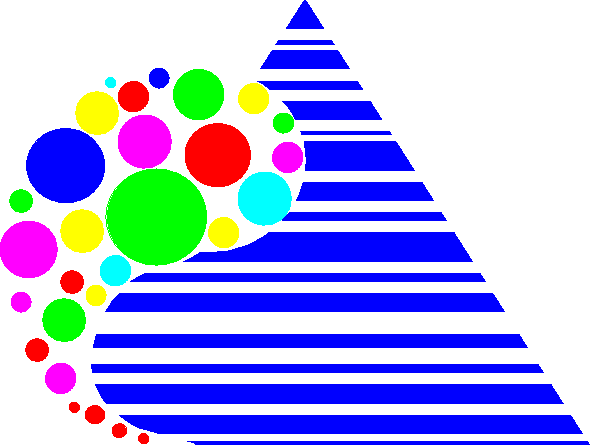|
Previous PACTs: If you are looking for
PaCT (Parallel Computing Technologies), please follow this link: PaCT-2007. |
The Seventeenth International Conference on
|
|
Conference Venue | Traveling
to Toronto |
Toronto
Toronto's Official Website.
Orientation: The city is located on the north-western shore of
Public Transit: Getting around the city is very easy by public
transit (called the TTC). There are
subways, buses and streetcars. When entering the TTC you pay a fare and can
obtain a slip of paper called a transfer (either from the bus or streetcar
driver or from a red machine in subway station entrances). A transfer allows
you to transfer from one TTC vehicle to another any number of times and is
valid as long as you are making one continuous journey, in one direction,
without stopovers. If you pay cash (with exact change), a trip fare is $2.75.
At the entrance to any subway station, you can buy 5 tokens for $11.25 ($2.25
per ride), or a weekly pass (valid for unlimited use from Monday to Sunday)
for $32.25. TTC also offers one day passes for $9. A day pass allows for
unlimited one-day travel on all regular TTC services. On Saturdays, Sundays
and statutory holidays, one day pass can be used for 2 adults and up to 4
children/youths 19 age or younger.
Weather: The average daily maximum temperature in October
is 14C and the average daily minimum is 7C. For more information about
Time:
Safety:
Telephones: To call direct to international locations, dial
011 followed by the country code. (To dial within
News: Two popular newspapers are Globe
and Mail and Toronto Star.
Currency: The currency is the Canadian dollar (currency conversions). ATMs are available
everywhere, and Mastercard, Visa and American Express credit cards are
accepted in most shops and restaurants. It's customary to tip waiters (about
15%) and cab drivers. In shops and restaurants, advertised prices do not
include provincial sales tax (8%) and the goods and services tax (5%), which
apply to almost all items (but not all).
About
Visiting Toronto
The free weekly Now magazine includes extensive listings
and reviews of events going on in town. Get it from the green newspaper boxes
on streets. Eye magazine (yellow
newspaper boxes) is another free weekly paper that also has listings.
The Toronto
Tourism site has lots of information about
Neighbourhoods
·
Queen Street
West: Restaurants, cafes, bars and shops make Queen St a major tourist
attraction.
·
The Distillery District:
Galleries, restaurants, craft stores, etc. all located in the beautiful brick
lined streets of the largest collection of 19th century industrial
architecture in
·
Kensington Market: Funky shops.
South of College St., west of
·
St Lawrence
Market:
·
Chinatown:
·
Little
·
Greektown:
Greek restaurants, etc. Along the Danforth near Pape subway station.
·
The Annex: Tree-lined
streets with Victorian homes, nice restaurants along
·
Yorkville:
Expensive shops and art galleries. Just north of
·
West Queen
West: lots of small art galleries, etc. Along
·
Cabbagetown: picturesque
Victorian houses. It's centered around
·
Bloor West Village: Nice little
shops and restaurants. Centre of Ukrainian community. Along
·
The Beaches:
Boardwalk along the shore, parks, small shops. Along
·
Little
·
The Village:
The centre of
Culture
·
Royal Ontario Museum: general collection
(history and life sciences), including newly opened wing designed by Daniel
Liebeskind. At Museum subway station.
·
Across the
street is the Gardiner Museum of
Ceramic Art.
·
Unfortunately,
the Art Gallery of Ontario is currently
closed for renovations. The gallery opens November 14th, 2008.
·
But the McMichael Canadian Art Collection is
open. It's the best collection of Group of Seven paintings, as well as other
Canadian art, in a lovely setting just outside of the city.
·
Bata Shoe Museum: Where else can you
find a museum devoted entirely to shoes? Located at St George subway station.
·
There are lots
of cinemas, including a couple of repertory cinemas, in downtown
·
There are
always lots of plays running in
Tourist Attractions
Discounts for some of the attractions can
often be found at AttractionsOntario.
·
The CN Tower (visible from most places
downtown) provides a fantastic view of the city. The main event of the
conference will take place at the Horizons Cafe located in the CN Tower.
·
Harbourfront: arts, music,
theatre by the lake. Walk southwest from Union Station.
·
The Ontario Science Centre: A science
museum, good for kids.
·
The Hockey Hall of Fame: Shrine to the national
sport. Near King subway station.
·
Casa Loma: a hundred-year-old,
hundred-room castle in downtown
·
The Design Exchange: a small but nice design
museum. Near King subway station.
·
Fort York: a 200-year-old fort near the
lake, west of Bathurst St.
·
Queen's Park:
·
High Park is one of the
nicest parks in
·
Toronto Zoo is also worth a visit.
Shopping Districts
See neighbourhood listings above, but
also:
·
Eaton Centre: glass-enclosed
shopping centre with all the usual stores. Stretches between
·
·
Queen Street
West: the stretch of
·
Yorkdale Mall: very large mall with all
the usual stores. Yorkdale subway station.
Outside Toronto
·
·
You can travel
to nearby major cities by train:
·
For wilderness
lovers, there are lots of hiking trails (e.g., the 800km-long Bruce Trail) and provincial parks in
The Ontario
Tourism site has information about the whole province.
(*) Most of the information presented here
was recycled from the websites of previous conferences held in
